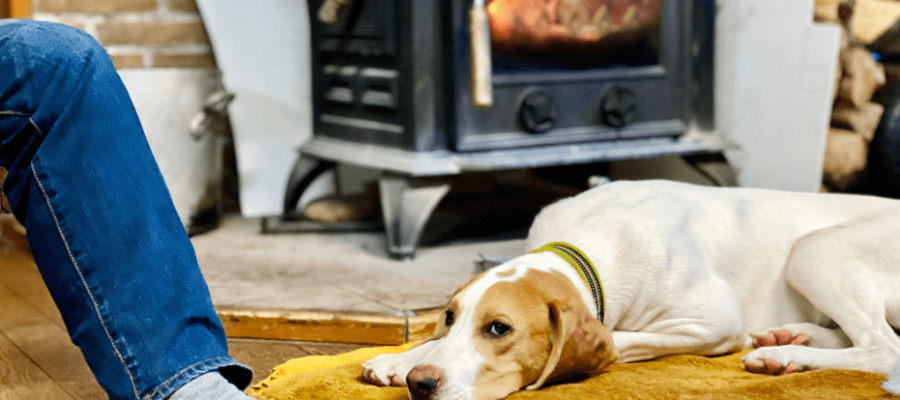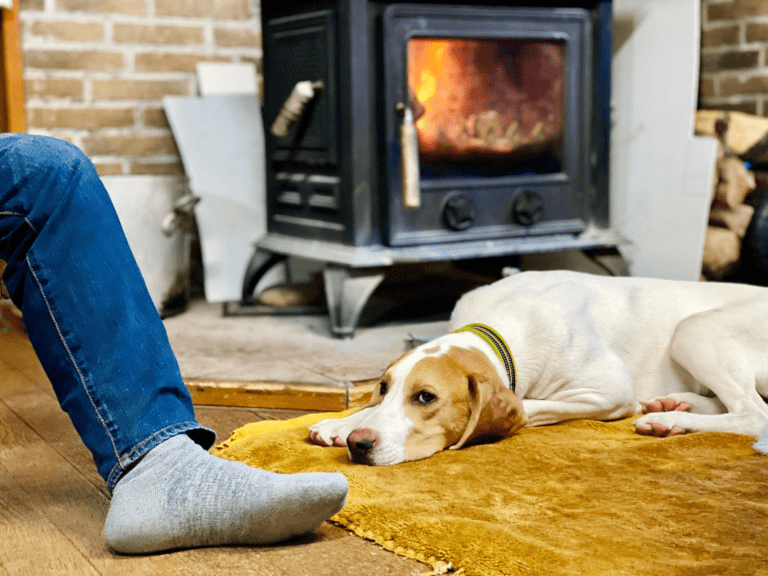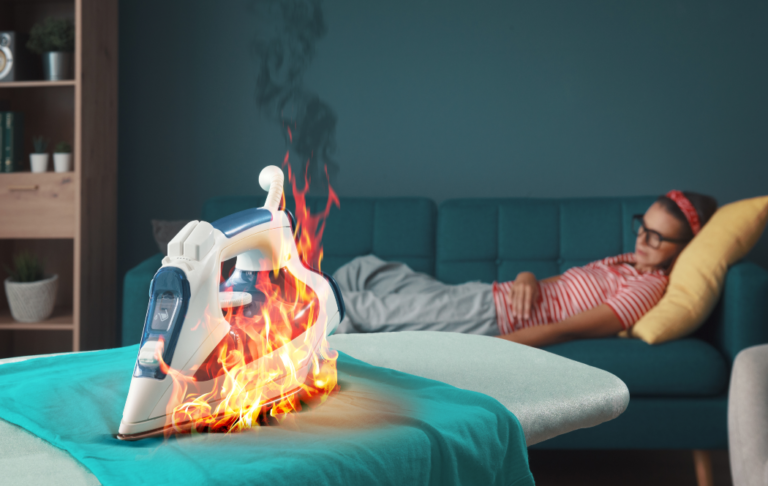Energy efficient wood stoves are becoming a popular and affordable option for heating homes. These appliances produce fewer emissions than most other forms of heating, and they also use less fuel. Depending on your needs, a wood stove can be as energy efficient as 65% or even higher.
Wood stoves are an excellent choice for cosy heating in a room. They have a high-efficiency burner and use less fuel than other types of fuel-burning appliances. As a result, they can save up to 50% on fuel costs. However, there are some things to look for when selecting a wood-burning stove.
First, you want to make sure that the stove you buy complies with building regulations and clean air legislation. Then, check whether it meets the EcoDesign criteria, which came into effect in January 2022.
The “Ecodesign Ready” designation means the stove has a high-efficiency rating and produces low emissions. This means that it is more energy-efficient than older models, which were not regulated by the Department for Environment Food & Rural Affairs (DEFRA).
In the UK, the government has decided to phase out the use of coal and wet wood for heating. The move aims to reduce the number of pollutants in the air, especially PM2.5, which can cause serious health problems. The government hopes that this new rule will push people to switch to cleaner fuels.

If you have an existing wood-burning stove, you should consider adding an electrostatic filter to reduce the particle pollution that is released when burning wood. In addition, you should regularly clean the chimney.
The size of your wood-burning stove is another important factor. It is important to select a stove that is the right size for the room you want to heat. Choosing the wrong size stove can result in overfiring or underfiring. This can be damaging to the stove and flue, and it is also bad for the environment.
For this reason, it is important to choose a stove that complies with the Ecodesign Standard. It guarantees a higher minimum efficiency and a lower maximum NOx and carbon partial emissions.
The cost of installing a wood-burning stove is considerably lower than installing a gas or electric heater. A typical household will save £300 per year by using a wood-burning stove compared to gas or electricity. A typical four-kW stove will cost you around £525 with a flu liner.
If your local government requires it, make sure your stove is Ecodesign Ready. This type of stove must comply with European standards and meet DEFRA’s Clean Air Strategy. A stove that is Ecodesign Ready will reduce emissions by 80% or more.
It is important to note that older stoves produce more emissions than those which are Ecodesign Ready.
Energy Efficient Wood Stove – Ecodesign-certified wood-burning stove
Ecodesign ensures a wood-burning stove meets a minimum efficiency of 65%
An Ecodesign-certified wood-burning stove is a good option for many reasons. It cuts down on air pollution, reduces emissions, and helps reduce your carbon footprint. Its high efficiency helps create more heat from less wood and is more efficient than an open fire.
They meet higher minimum efficiency standards than non-Ecodesign stoves. These standards aim to reduce the emissions of organic gases, carbon dioxide (CO2) and particulate matter from wood burning. The resulting cleaner smoke also increases the amount of heat in the room.
An Ecodesign-compliant stove must meet a minimum efficiency of 65%. This efficiency is based on seasonal energy requirements and technologies to support the appliance’s performance.
Also, ecodesign-compliant stoves use up to 70% fewer logs than a standard stove, and they require up to 20% less fuel than an open fire. In addition, they produce heat at a lower temperature than a standard stove, which can lower your energy bills.
In addition, an Ecodesign-certified stove has been independently tested and verified by HETAS, and meets the strict efficiency requirements of the EU’s Ecodesign program, which has come into force in the UK in 2022.
An Ecodesign-certified stove is certified by Hetas, and the stove’s efficiency rating is listed on its HETAS certificate.
When buying a wood-burning stove, always look for the Ecodesign label. This guarantees that the stove meets strict minimum efficiency requirements, and will meet smoke control regulations in smoke-controlled areas. Furthermore, wood is a low-carbon fuel, with only a small net release of carbon dioxide. This is due to the fact that new trees absorb carbon dioxide and balance the emissions from burning bioenergy.
Energy Efficient Wood Stove – Cost of fuelling a wood-burning stove
The cost of fuelling a wood-burning fireplace or stove can vary greatly depending on the type and size of the stove and the fuel used. The price of cordwood costs about £5 per cord, while pellets cost between 17 and 63p per ton.
The efficiency of your wood-burning stove also plays a part. It is estimated that a wood stove can save up to 70% in fuel costs compared to an oil boiler or gas furnace.
How to Build a Smokeless Fire in a Wood Burning Stove: Video
Fuel for a wood-burning stove should be purchased in bulk. Logs require more space and must be stored safely. Additionally, logs need a place to be stored, which must be kept dry and protected from rain.
When buying firewood in bulk, it is recommended to buy smokeless fuel as it is less expensive.
Energy Efficient Wood Stove – Environmental impact of wood-burning stoves
Wood-burning stoves produce pollutants known as particulate matter (PM), which are dangerous to human health. These particles are thinner than a strand of hair, and they can travel deep into the body. According to Environmental Health Perspectives, around 4.8 million homes in the United States contain wood-burning stoves. High levels of PM can lead to heart disease and lung disease.
The EPA has a long-standing rule that limits particle emissions from wood-burning appliances. It was originally created in 1988, but it was not updated until 2015. Eventually, incentives for wood-burning stoves were withdrawn, and EPA regulations were revised to require more stringent emissions limits.
As of this writing, EPA’s policy allows wood-burning stoves to produce only 2.5 gpm of particles per hour. Despite this, the hearth patio and barbecue association lobbied against EPA’s guidelines.
Basics of heating with wood stoves: Video
When choosing a wood-burning stove, consider your heating needs and the climate of where you live. Wood-burning stoves are great for supplemental heat, but you should not use them for heating all night long. It’s also important to be aware of the fire hazards and dangers of using wood stoves – especially when leaving them unattended.
Finally, overuse will reduce their efficiency and create excess emissions.
Energy Efficient Wood Stove – best energy-efficient wood-burning stove
When it comes to buying an energy-efficient wood-burning stove, you have a few options. Firstly, you can get one with Ecodesign certification, which means it meets a higher minimum efficiency.
Next, you can go for an EPA-certified stove that produces less than 4.5 grams of smoke per hour. These models are more expensive to purchase but will help you make a more environmentally friendly choice.
An Ecodesign stove meets higher minimum efficiency standards than a non-Ecodesign stove. These standards aim to reduce the emissions of organic gases, carbon dioxide (CO2) and particulate matter from wood burning. The resulting cleaner smoke also increases the amount of heat in the room.
When buying a wood-burning stove, always look for the Ecodesign label. This guarantees that the stove meets strict minimum efficiency requirements, and will meet smoke control regulations in smoke-controlled areas.
Furthermore, wood is a low-carbon fuel, with only a small net release of carbon dioxide. This is due to the fact that new trees absorb carbon dioxide and balance the emissions from burning bioenergy.
Energy Efficient Wood Stove – More environmentally-friendly than traditional open fires
The new wood-burning stoves are more environmentally friendly. The UK and the European Union are currently preparing for the introduction of an eco-design standard for these products.
Furthermore, older stoves are more likely to emit more pollution than modern models.

Wood-burning stoves can be more efficient than open fires, which can produce a lot of smoke and heat. Moreover, a good wood-burning stove can heat a room three times longer than an open fire does, while using the same number of logs.
Another major difference between the two types of burning is the way that the wood-burning stove circulates the air within the room. This prevents the hot air from being exchanged with outside air, which can result in greater pollution.
Energy Efficient Wood Stove – Expenses
Fortunately, the federal government has provided a tax credit for the purchase of energy-efficient wood-burning stoves. The credit applies to the full cost of the equipment and installation of these stoves.
The tax credit was eliminated in 2012 and was retroactively reinstated in 2013. The law allows you to claim the tax credit for a stove up to £1,500. However, the tax credit will not be valid if you use biomass heat.
The Energy Savings Trust supports the use of energy-efficient wood-burning stoves, which reduce home heating bills by up to 10%. That kind of savings can make a huge difference in your monthly budget.
In addition, wood-burning stoves are better for the environment. They emit less carbon than older stoves, and most are certified by the Environmental Protection Agency (EPA).
In Conclusion
Wood-burning stoves are often more efficient than open fires which can generate a lot of smoke. A wood-burning stove is three times more efficient than an open fireplace and uses the same amount of logs.
Also, new wood-burning stoves are better for the environment. Older stoves emit more pollutants than modern ones.
Next, always look out for the Ecodesign label when buying a wood-burning fireplace. This label guarantees that the stove meets minimum efficiency standards and that it will comply with smoke control regulations in areas where they are not controlled.
Finally, consider your heating requirements and climate when choosing a wood-burning stove. Wood-burning stoves can be used for heat supplemental, but not for all-night heating. You should also be aware of fire hazards and dangers associated with wood stoves, especially if they are left unattended.
Overuse can also reduce their efficiency and cause excess emissions.
Why choose a wood-burning stove when you can get the cheapest and best rates for your green energy and other utilities! Plus this is heating you can leave on all night, if you choose to, without worrying about fire hazards 🙂








